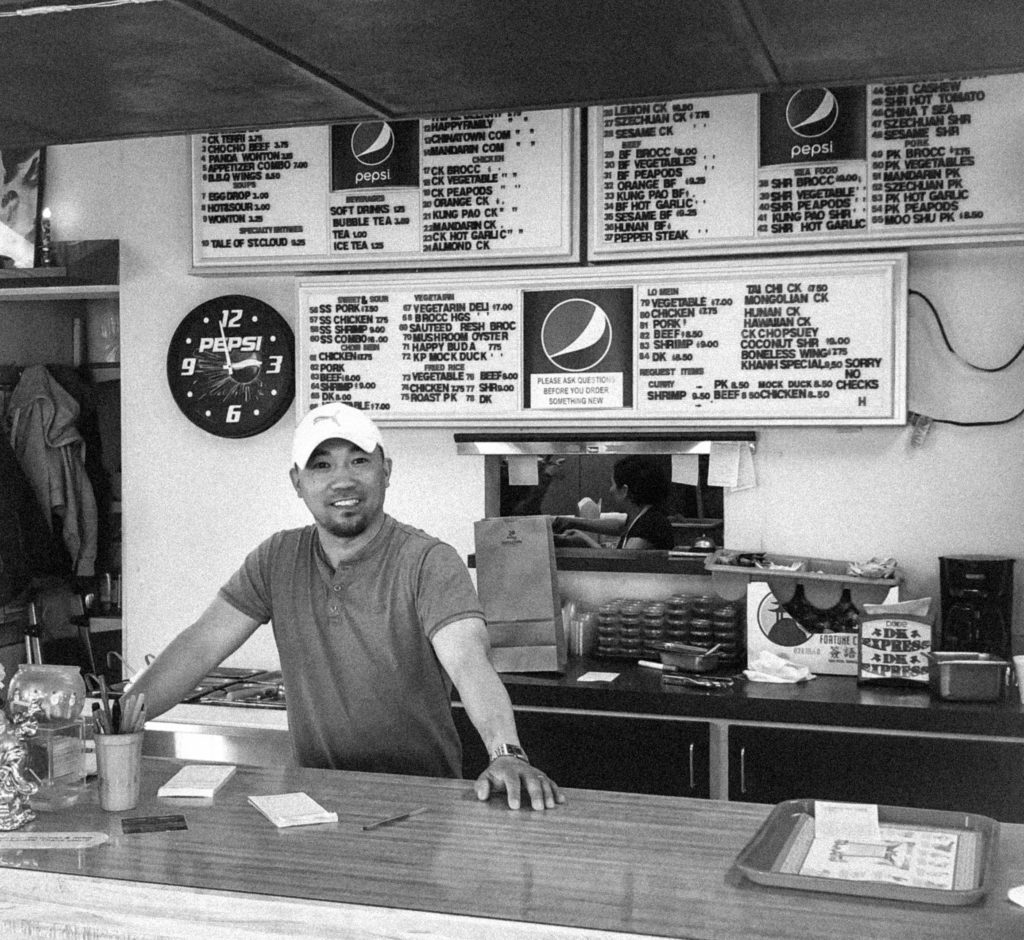
Nowadays, marketing for businesses is pretty much non-negotiable. However, not all businesses have the budget for all the marketing bells and whistles. This article will explain 10 ways to market your company successfully without a big budget.
1. Go Guerilla.
Guerilla marketing means leveraging your teams’ creativity, imagination and originality in place of a big budget. Businesses with a small marketing budget often use guerilla marketing to compete with huge companies. There is no shortage of creative guerilla marketing ideas. Here are just a few examples:
- If you have a brick and mortar location, pay someone to create a branded mural design using spray paint artistry. (Make sure they are professionals and that your building and city will allow it first!)
- If you sell a product that can be used on the street, employ undercover agents to promote your product directly to potential customers.
2. Be Helpful.
Always keep in mind that your marketing should be helpful to your audience. Ask yourself, ‘How is this benefiting my audience?’ when creating marketing tools and pieces. Marketing trends and analytics suggest that providing insightful user generated content is the best way to engage with your audience. There are many ways that you can make your marketing efforts an informational message rather than an annoyance. Try to keep these tips in mind:
- Share useful information. Information marketing has proven to be highly effective in increasing sales. By educating your audience on problems that they care about, you are also not only growing your customer base but also positioning yourself as the solution. To do this, host a webinar, an event, a class or even offer to speak at events.
- Provide assistance. Answer questions posted on forums, social media and websites like Quora and direct your audience to your website for more information.
Not only do potential customers love great content, but so does Google. There are many ways to share information — blogging, creating videos, hosting podcasts, designing infographics or submitting articles to online authority sites. Not only do you gain authority as an expert, but you also receive free traffic in return. Offer to be a guest blogger for another complementary website or be interviewed on a podcast.
You don’t always have to produce the content yourself. Hire dedicated freelance writers, graphic designers and personal assistants through websites like Upwork or Fiverr to ensure a constant flow of quality content.
3. Capitalize on Social Media.
Today around seven-in-ten Americans use social media to connect with one another, engage with news content, share information and entertain themselves.
Popular social media channels include Facebook, Twitter, Instagram, Pinterest, LinkedIn, Google Plus and Snapchat. Each of these social media platforms are unique in its own right and require equally unique ways of engagement. Rather than try to master it all at once, choose a few you like and try to master those first. It’s better to be totally dominating one or two channels than doing just a subpar job at all of them.
Making sure that your team is actively sharing your company’s posts is a great way to increase engagement. Also, creating channels and avenues for leadership at your company to share their thoughts and best practices is a great way to curate traction and online personalities.
Conventional advertising mediums such as TV, radio and newspaper ads can be extremely costly and hard to measure effectiveness, but online advertising can be less expensive and more targeted. Popular options are Google Pay Per Click ads and Facebook ads. Also, don’t forget to list your business in free online directories like Google Business for Google Maps and Yelp.
Although paid advertising is a great way to get others who aren’t currently following you to be introduced to your company, our rule of thumb is that you should be creating organic posts at least 5 times more than paid advertising. Paid advertising should be a good support, but it shouldn’t be a go-to crutch. Organic and paid mixed together yields the best outcomes, which is great news for a company with a small marketing budget.
4. Run Contests and Giveaways.
Everyone loves free gifts! Giving away desirable or fun items help to gain trust, build brand awareness and connect with potential customers. They don’t need to be expensive. Things such as online e-books, white papers and checklists don’t cost you anything but your time.
Some of these ‘giveaway’ types of marketing campaigns have blown up overnight, which is what we call in marketing: ‘going viral.’ Usually, it’s an extremely creative idea that most people haven’t been introduced to before, however there’s really no rhyme or reason to what will and won’t go viral. Here are some examples of things that have done so in the past:
- One of the best marketing efforts that went viral semi-recently was the ALS Ice Bucket Challenge. People dared their friends and family to pour ice cold water on themselves within 24 hours. Those who failed to do so would then have to donate to the ALS charity.
- Another (and one of our personal favorites), was the Beats Headphones giveaway at the London 2012 Olympic Games, where Beats gave a pair of headphones to every athlete on each Olympic team. Many would call this marketing stunt controversial, but regardless of the rulings – it was pretty brilliant. The headphones given were branded in their country’s colors, and the athletes would use them during warm ups. When the athletes wore their new Beats during the most viewed televised sporting event in the world, sales went through the roof in the following weeks.
With all this being said, don’t be afraid to give someone a free trial or a sample. In today’s economy, people are more comfortable purchasing something they have been able to experience first. And who knows, your one idea might be the next to go viral and that type of publicity is priceless.
5. Can’t Give Away for Free? Run a Discount Program.
Coupons and discount codes are a good way for many businesses to attract new customers. Research shows that people will go out of their way to use a coupon, proving that this method is successful in expanding your customer base. Even with a small marketing budget, you can always give a little.
Coupons can also generate return visits. For example, if you give a customer a coupon for a discount to use on future business, there’s a high probability they’ll be back.
Make sure that with discount programs, you can answer these two things:
- Is this going to enhance the goal you’re trying to reach? Make sure that it is well thought out and that your company doesn’t lose more than it gains.
- Does this enhance our brand? Giving customers a deal is a great thing, but if you’re differentiator is not being a low-cost option, make sure that your discounts are far and few between. Running too many may actually cause an adverse effect of cheapening your brand, therefore losing credibility with your target audience.
Discount programs can be a great source of traction, especially if you involve those who will share the discount with their following aka utilizing the ‘influencer’ marketing movement. To find an influencer that might be beneficial to your business, check out Find Your Influence.
6. Ask for Referrals and Partnerships.
When you are a business with a small marketing budget, it makes sense to partner with other complementary businesses. These can include manufacturers, suppliers and vendors. Not only do you both win when your businesses succeed, but there is added credibility when another business recommends you.
As an example, you can exchange customer lists and offer to pay the business a commission for every sale you make. Just make sure that you have requested permission from your customers to share their details!
You can also seek partners within your existing customer base. Create a referral rewards program where you reward your customers for referring business to you. Word of mouth is extremely effective when it comes to marketing.
Don’t be shy about asking for customer referrals. The majority of people say they are willing to provide a referral if asked, but very few take the initiative to do it on their own. Referrals make it easier to get in the door with new customers. If you aren’t asking for them, you are missing opportunities.
7. Get an “In” with the Media.
Getting your business featured by the media is free marketing. To capture the attention of the media, try these and invite the media to come and cover it.
- Create a publicity stunt. Think of some of the crazy ones that Richard Branson has pulled off including dressing as a female flight attendant onboard his airline.
- Do something for the community and send out a press release prior to the event. For example, some innovative hair dressers have offered free haircuts to the homeless where they quite literally set up shop on the streets.
- Sponsor a sporting event by donating your products or services as giveaways or prizes or host a contest.
- Nominate yourself for a business contest or award. If you win, even better!
You can also seek opportunities to be interviewed for print, radio and TV. To look for opportunities to contribute your expertise, sign up to an email list like Help A Reporter Out. You can respond to reporters’ queries that are looking for story ideas and resources. Some are small media opportunities, but others are major media outlets that use this service too. Either way, you can leverage the media easily with a small marketing budget.
8. Craft an Elevator Pitch.
You should be marketing all the time — wherever you are. Therefore, you need a compelling elevator pitch. The art of a good elevator pitch is all about time. Research shows the average attention span of an adult is about six to eight seconds. That’s all the time you have to grab someone’s attention.
If you successfully engage them, then you only have a little over a minute to really sell them on your product or service. Invest the time to craft a killer elevator pitch. The return on your investment will pay huge dividends in terms of creating business opportunities. Also, always understand that most people aren’t experts in what you do, so you’ll need to explain it at a more understandable level. Here’s an example:
“I work on nanotechnology to deliver medical therapies to targeted cells”
This pitch is too technical and difficult to grasp. Besides, it does not clearly present what the product does and how it adds value to the field of medicine.
“We are using manufacturing techniques with the computer industry to make better vaccines”
The second pitch is easy to understand, quick and concise. Winner!
9. Give Back, Collaborate and Network with your Local Community.
Give Back
You don’t have to think big when it comes to your marketing efforts. Better yet, think locally. What’s going on in your community?
Sponsor a Little League team or a 5k charity walk/run. Volunteer at a local shelter or nursing home. Get to know your ideal customer and think about how and where they spend their time. That might help you pick a community event to focus on out of the thousands available in most communities.
Collaborate
Put together a group of synergistic, non-competitive businesses in your area and agree to cross-promote. Make sure that their mission and brand are something you can align your company with.
You can use coupons, fliers, reciprocal website links, bundled promotions or social media platforms. By collaborating with each other, you can expand your customer base ten fold.
Network
I’m a huge fan of networking. I don’t think there is any better way to build a business than to get out there, shake some hands, kiss some babies and get to know people.
Networking requires a time commitment and it doesn’t provide instant gratification, but a strong network is one of the greatest assets any business person can have.
10. Build Relationships.
It is a lot less expensive to keep a customer than it is to get a new one. That’s why establishing strong relationships with your customer base is crucial. One of the ways you can do this with a small marketing budget is by keeping in touch with people through email marketing.
Ask customers for their email address when they visit your store or website. Then, make your communications informative, helpful and professional — something your customers will look forward to receiving.
Follow up with personal touches. Stay as organized as possible when crafting notes on each customer. For us, whenever we have contact with a customer, we strive to write down what was asked, what was accomplished, what the follow up is, and one personal touch note. That way, when we contact them the next time, we can follow up on a personal level.
One of the last things we will add is the power of a hand-written note. So many people don’t take the time to do this anymore, which is what makes it that much more special when they are received. Take the time to do inexpensive personal touches, and it will go a long way with the customer.
These ten, small marketing budget strategies will help you engage customers, build relationships, and ultimately keep your brand top-of-mind. It’s not always about the money you have to spend on marketing, it’s about the time and effort you put into it and above all, the relevance it has for your customers.





About The Author: Paymentsmith
More posts by paymentsmith